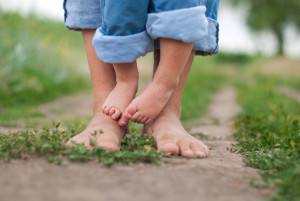What Is a Tarsal Coalition?
Tuesday, 12 July 2022 00:00
Tarsal coalition is a congenital condition where two bones of the foot are connected. The hindfoot is composed of the talus, calcaneus, cuboid, navicular and cuneiform bones. When two of these bones grow together, usually connected by a bridge of cartilage, it is known as a tarsal coalition. The two most common sites are between the calcaneus and navicular bones, or between the talus and calcaneus bones. Though a tarsal coalition usually begins in the womb, it often is not detected until early adolescence. At that point the child’s foot may become stiff and painful, and their daily activities may be more difficult to perform. Symptoms include stiff, painful feet and a rigid flat foot that makes it hard to walk. A limp can develop with higher levels of activity. Many people do not experience symptoms from a tarsal coalition until later in life, usually because another condition, like arthritis, makes it more apparent. A podiatrist can examine your child’s foot with X-rays and other imaging tests to detect the location and severity of the coalition. A number of non-surgical treatments are available, including orthotics, a boot or cast, and injections. In certain cases, surgery may be an option. If your child is complaining of heel pain or is exhibiting any of the above symptoms, please contact a podiatrist for an exam and a diagnosis.
The health of a child’s feet is vital to their overall well-being. If you have any questions regarding foot health, contact one of our podiatrists of Central Ohio Comprehensive Foot Care. Our doctors can provide the care you need to keep you pain-free and on your feet.
Tips for Keeping Children's Feet Healthy
- Make sure their shoes fit properly
- Look for any signs of in-toeing or out-toeing
- Check to see if they have Clubfoot (condition that affects your child’s foot and ankle, twisting the heel and toes inward) which is one of the most common nonmajor birth defects.
- Lightly cover your baby’s feet (Tight covers may keep your baby from moving their feet freely, and could prevent normal development)
- Allow your toddler to go shoeless (Shoes can be restricting for a young child’s foot)
- Cut toenails straight across to avoid ingrown toenails
- Keep your child’s foot clean and dry
- Cover cuts and scrapes. Wash any scratches with soap and water and cover them with a bandage until they’ve healed.
If you have any questions, please feel free to contact one of our offices located in Delaware and Westerville, OH . We offer the newest diagnostic and treatment technologies for all your foot care needs.








